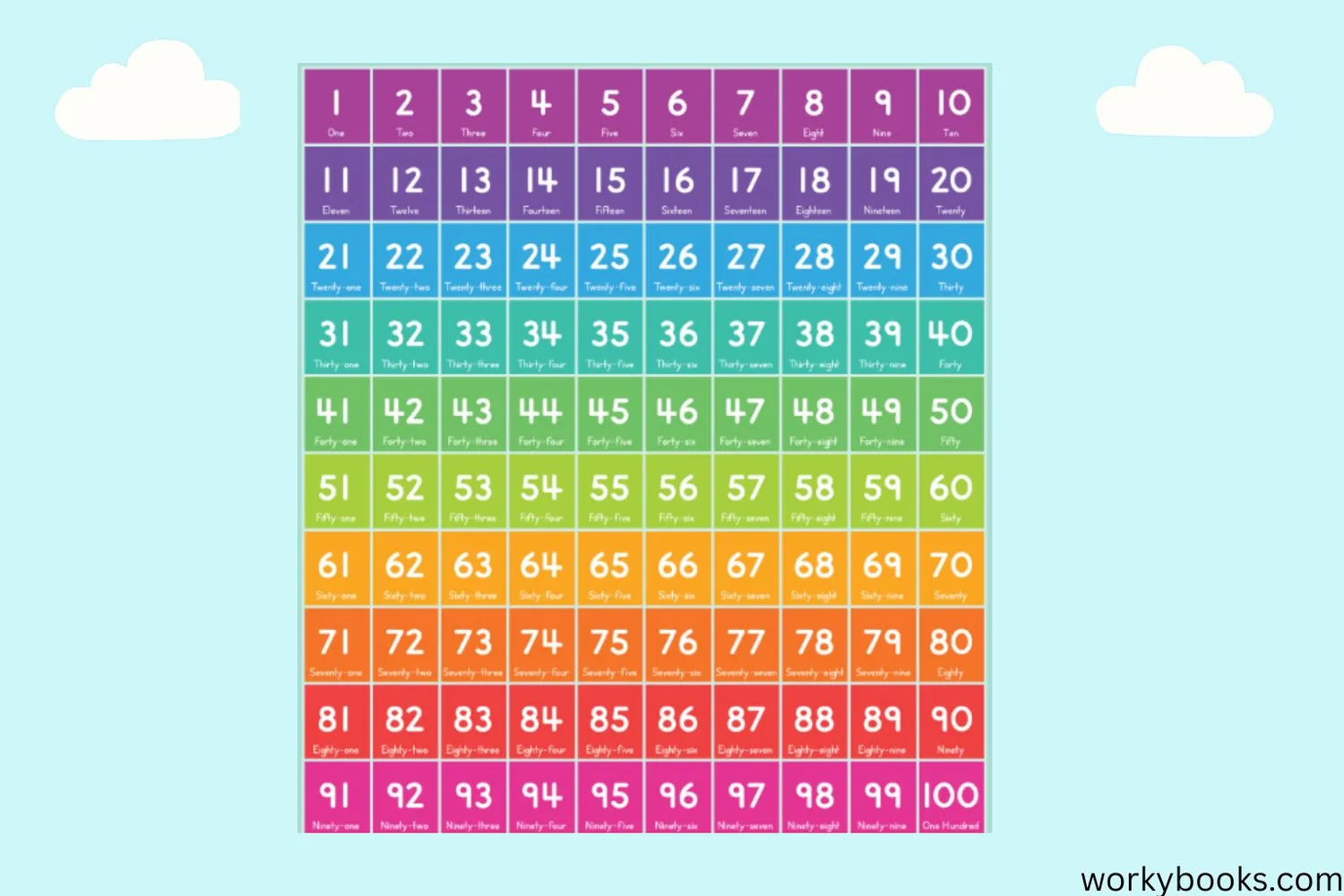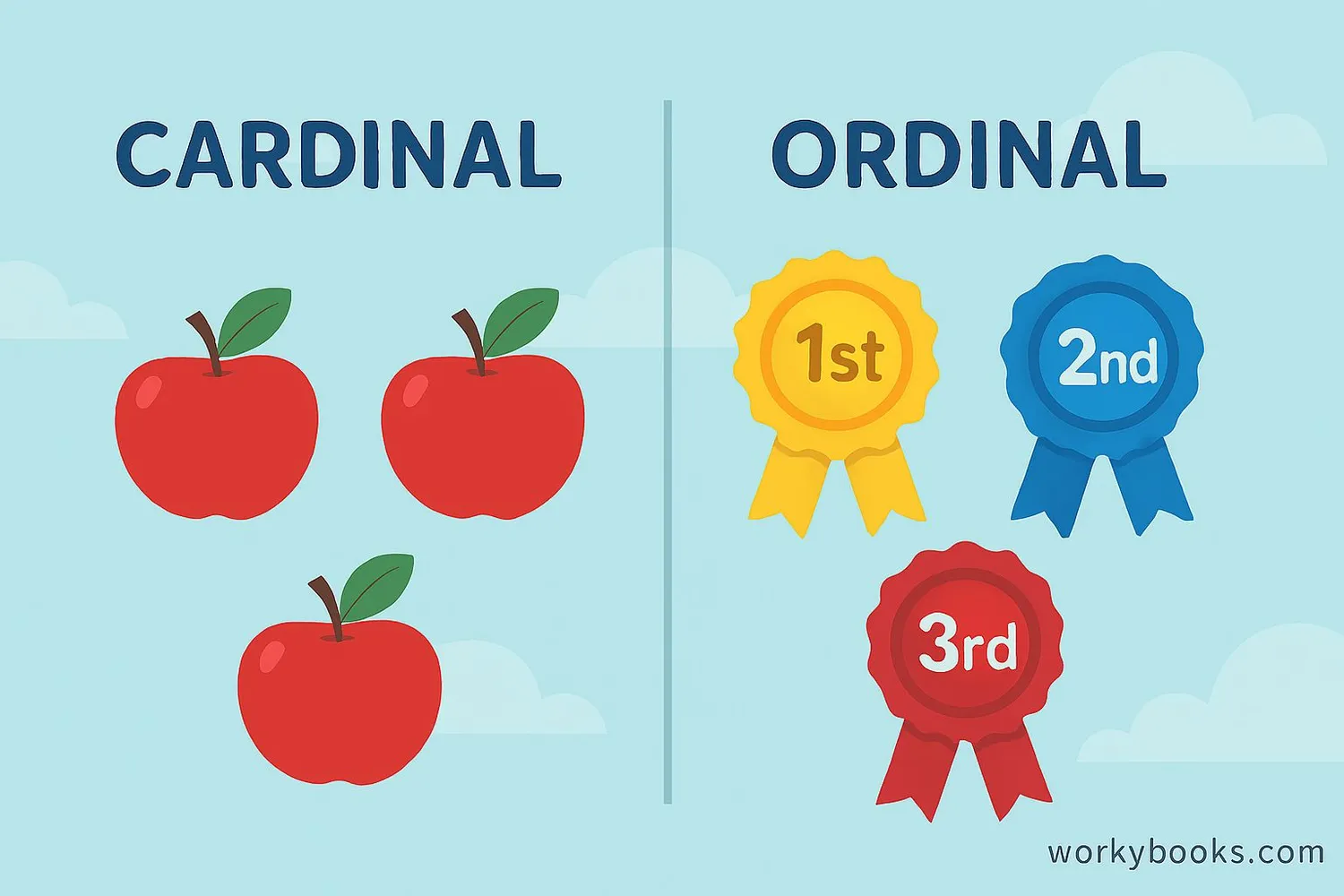Cardinal Numbers - Definition, Examples, Quiz, FAQ, Trivia
Learn counting numbers with simple explanations, examples, and practice activities
What Are Cardinal Numbers?

Definition
Cardinal numbers are numbers that tell us how many of something there are. They answer the question "how many?"
Cardinal numbers are the counting numbers we use every day. When you count how many pencils are on your desk, how many friends are at your birthday party, or how many cookies are in the jar, you're using cardinal numbers!
These numbers start at 1 (one) and go on forever: 2, 3, 4, 5, and so on. Zero (0) is also a cardinal number that tells us there are none of something.
Cardinal numbers help us understand quantities. For example:
- There are 7 days in a week
- A triangle has 3 sides
- You have 10 fingers
Key Concept
Cardinal numbers answer the question: "How many?" They tell us about quantity.
Cardinal Numbers List

Here is a list of cardinal numbers from 1 to 20. These are the building blocks for all larger numbers:
After 20, we count by tens: 30 (thirty), 40 (forty), 50 (fifty), and so on. The pattern continues to 100 (one hundred), then 200 (two hundred), all the way to infinity!
Remember that zero (0) is also a cardinal number. It tells us there is nothing or none of something. For example: "There are 0 cookies left in the jar."
Remember
Cardinal numbers go on forever - there is no biggest number!
Examples of Cardinal Numbers

We use cardinal numbers every day in many different situations. Here are some common examples:
Counting Objects
"There are 5 apples in the basket."
"I have 2 brothers and 1 sister."
Age
"My little sister is 3 years old."
"My grandfather is 75 years old."
Measurements
"The room is 12 feet long."
"I drank 2 glasses of water."
Quantities
"There are 50 states in the United States."
"A soccer team has 11 players."
Cardinal numbers help us understand the world around us. They tell us about amounts and quantities in a precise way.
Practice Activity
Look around your room. How many windows do you see? How many chairs? How many books on your shelf? These are all cardinal numbers!
Cardinal vs. Ordinal Numbers

Cardinal numbers are different from ordinal numbers. While cardinal numbers tell us how many, ordinal numbers tell us about position or order.
| Cardinal Numbers | Ordinal Numbers |
|---|---|
| Tell "how many" | Tell "position" or "order" |
| 1 (one), 2 (two), 3 (three) | 1st (first), 2nd (second), 3rd (third) |
| "There are 5 apples" | "I finished in 1st place" |
| "We have 2 dogs" | "Her birthday is on the 15th of June" |
| "I read 10 pages" | "This is my 3rd attempt" |
Remember the difference:
- Cardinal = Counting (how many?)
- Ordinal = Order (what position?)
Quick Tip
If the question is "how many?", use a cardinal number. If the question is "which one?" or "in what position?", use an ordinal number.
Cardinal Numbers Quiz
Test your knowledge with this 5-question quiz. Choose the correct answer for each question.
Frequently Asked Questions
Here are answers to common questions about cardinal numbers:
Number Trivia
Discover interesting facts about numbers:
Oldest Number System
The oldest known number system is over 20,000 years old! Ancient people used tally marks on bones to count things like days or animals.
Number Sense in Animals
Many animals understand cardinal numbers. Bees can count landmarks, and fish can recognize small quantities. Some monkeys can even do simple addition!
Different Number Words
Different languages have different words for numbers. In Mandarin Chinese, the number 11 is "shí yī" which means "ten one". In French, 80 is "quatre-vingts" meaning "four twenties".
Biggest Named Number
The largest named number is "googolplex" - 1 followed by a googol of zeros. A googol is 1 followed by 100 zeros. There aren't enough atoms in the universe to write out a googolplex!





